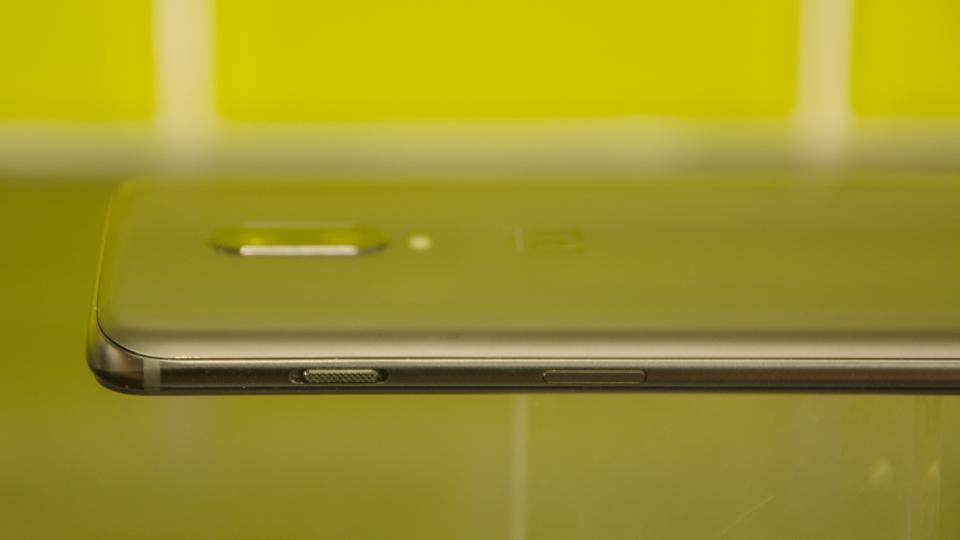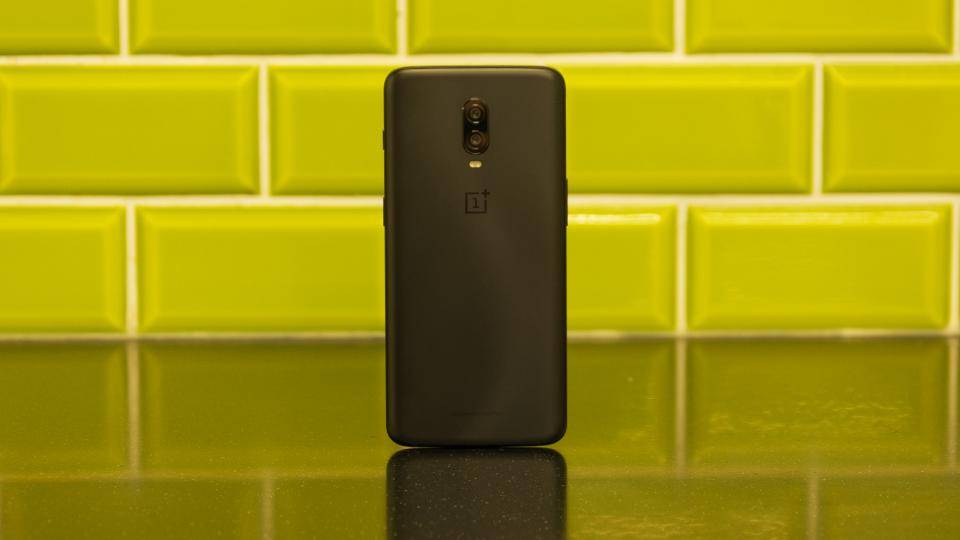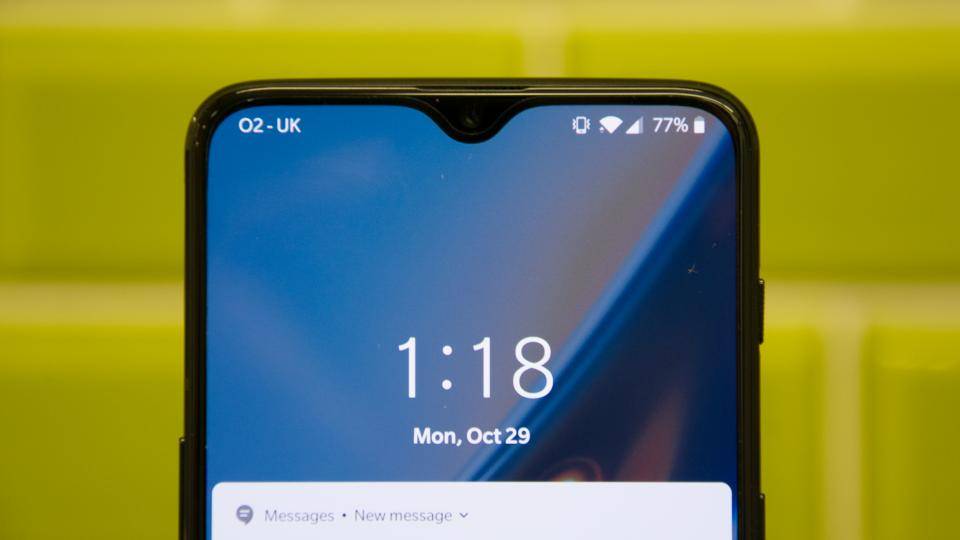If there’s one bad thing you can say about OnePlus, it’s that it’s made reviewing phones very, very dull. It's done this in the best possible way for consumers, of course: the Chinese company has made sleek, powerful smartphones that equal or better the big-hitting flagships, some of which cost twice the price in some cases.
But inflation has taken its toll in recent years. While the OnePlus 3 launched at £309, just 28 months later the OnePlus 6T is going to cost you £499. That’s an increase of 61% and, for once, you can’t blame it all on Brexit. If you’re feeling really flush, you can get a version with 8GB of RAM and 256GB of storage for £579.
Still, it’s worth remembering that, in the same period, all phone prices have shot up. The OnePlus 3’s Samsung rival was the £569 Galaxy S7. This year’s Galaxy S9 launched at £739 (up 30%). The real questions are: does it still offer performance where it counts and is there anything to rival it for less money? The answers are an enthusiastic “yes” and a caveated “no”…
OnePlus 6T review: What you need to know
Since 2016, Chinese manufacturer OnePlus has taken to releasing two phones a year. The first is a big flagship using the latest Qualcomm chip. The second, at the end of the year, offers incremental improvements to design without boosting the raw power. This isn’t on account of laziness: the Snapdragon 845 processor that powers both the OnePlus 6 and 6T is still super quick and as good as it gets until early 2019 when the 855 comes out.
So what are the big headline improvements here? First, it has a fingerprint sensor under the screen, leading to a 6.41in display that covers almost the whole front. I say “almost” because there’s a notch here, but it’s significantly smaller than the one on the OnePlus 6 and now only a tiny teardrop at the top houses the front-facing camera. We also get a big boost to the battery: it’s up 400mAh from the OnePlus 6, meaning a capacity of 3,700mAh. The downside? This jump has been made by following Apple, Sony and Google in ripping out the beloved 3.5mm headphone jack. Et tu, OnePlus?

OnePlus 6T review: Price and competition
The 6T is the first OnePlus model made readily available across a variety of networks. You can pick up the OnePlus 6T at EE , O2 , Vodafone , Amazon , Carphone Warehouse and John Lewis in the UK. That's a SIM-free price of £499, by the way, and you're looking at around £40 a month if you opt for a 24-month contract.
Price raise or not, this is still among the cheapest routes to getting a Snapdragon 845-toting smartphone in the UK. That caveat is important, but let me just outline the best UK-based alternatives before we get into grey import land. There’s the Samsung Galaxy S9 , which launched at £739, but can often be found hovering around the £500 mark if you shop around – and that’s the same place the Sony Xperia XZ2 Compact started out. A similar price cut has hit the LG G7 . Elsewhere, barring sales, everything is more expensive. Then there’s the grey market. The Asus Zenfone 5Z is very hard to find in the UK (we’ve only been able to review its mid-range sibling), but packs a Snapdragon 845 chip and should go for under £500. Then there are various Chinese handsets from Vivo, Xiaomi and Meizu: you can read about the best of them here . Finally, there’s the Xiaomi Pocophone F1 . It deserves its own paragraph because it could be a gamechanger and is coming to the UK soon. With brilliant specs on paper and a OnePlus-undercutting price of £330, it’s definitely worth considering.
Best OnePlus 6T contract and SIM-free deals:
OnePlus 6T review: Design and key features
The OnePlus 6T is a collection of incremental improvements and virtually all of them are in the design. The bezel is all but gone now, with a rounded 6.41in display covering 86% of the front of the handset. There’s no chin with a home button and only a tiny “notchlett” at the top, curved in just enough to include the front-facing camera.
OnePlus has been able to do this because the in-screen fingerprint reading technology is finally ready for show time. The company claims it wanted to bring it out with the OnePlus 5T, but the technology wasn’t reliable enough. But has OnePlus jumped too early?

I’m pleased to report that it works well. Really well. In fact, it’s almost as fast as a standard reader. When you push your thumb against the on-screen overlay – which is about three-quarters of the way down the screen – the whole thing glows bright green with a flashing electrical animation. When approved, you’re allowed in. The whole process should take no longer than 350ms, according to OnePlus. As it's read via a separate camera illuminated by the green light, the company says that, theoretically, a cracked screen shouldn’t impact your ability to use it – if you’re happy getting bits of glass in your thumb. Otherwise, it’s a standard but very handsome-looking handset. It's a little bit Apple-y, certainly (right down to the mute switch), but only a real iPhone-phobe could see that as anything but a compliment. The fingerprint reader is now part of the screen, meaning the smooth back of the phone just sports a dual vertical camera array, the flash and a small OnePlus logo. The words “Designed by OnePlus” appear in a tiny font at the bottom, which feels a touch superfluous given the logo above, but it's further evidence that the company wants to be known as much for its design as for its competitive pricing.

So far, so good. However, I don’t want to let OnePlus off the hook too easily because there are anti-consumer sacrifices here in the race to make a sleek-looking handset. For starters, there’s still no expandable memory. That’s not too big a deal in a phone that packs 128GB storage, but it’s still a shame. More serious is the removal of the 3.5mm headphone jack. It’s clearly the way the wind is blowing, but OnePlus was doing great work in maintaining a feature that remains immensely popular. The company softens the blow by including an adapter in the box and claims the space saved allows for 400mAh extra battery capacity – yet it still feels like slim consolation. Keeping the headphone jack also gave OnePlus an excuse to avoid making its products water and dust-proof with an IP rating. Yes, it was a weak excuse given Samsung manages to add both to its top-end Galaxy phones, but it was a get-out all the same. Well, surprise! The headphone jack is gone, but OnePlus still isn’t waterproof – not officially at least, with the company saying it’s “water resistant” for everyday use. Disappointing.
OnePlus 6T review: Display
The OnePlus 6T squeezes a 6.41in screen into pretty much the same footprint at the OnePlus 6. This has been achieved by reducing the bottom bezel by 1.5mm, the top by 0.5mm and the sides by 0.13mm, leading to a screen-to-body ratio of 86%. It certainly dominates the phone, and OnePlus offers four colour presets to make the most of it. As is par for the course with these things, the default mode is far too gaudy, but changing things to sRGB shows a screen that performs well – but it's still some way off being the best in class. Let’s start with the positives. It’s OLED, which means you get perfect contrast and dark, inky black. This also means you can have the fancy always-on display, where your clock is visible at all times if you’re happy with an extra 1% or so battery drain per hour. In sRGB mode, it also covers 99.6% of the colour gamut, which is, as you might imagine, very good indeed.

OnePlus 6T review: Performance and battery life
Spec-wise, the OnePlus 6T is virtually identical to the OnePlus 6 that preceded it. That shouldn't come as any surprise: the internals of the OnePlus 6 were as good as money could buy at the time and that hasn’t changed in the intervening six months. So you’re still getting a Qualcomm Snapdragon 845 powering the show, backed up by either 6GB or 8GB of RAM. There’s still no microSD card slot, but all configurations come with a generous quantity of internal storage: 128GB for the entry-level 6GB of RAM model and up to 256GB for the version with a bit more memory.
Our review unit was the £529 8GB/128GB model, to give some context to the benchmarks below. It should go without saying that the OnePlus 6T’s performance is outstanding. However, in truth, it’s no more outstanding than any other 2018 flagships – as the somewhat predictable chart below demonstrates.
Geekbench 4 scores of 2,394 and 9,016 are as good as it gets on Android. The graphical performance is also top-notch. Not only does the OnePlus 6T blow through the Manhattan 3.0 test with 59fps onscreen and 83fps offscreen, it also has a game attempt at the more demanding car chase benchmark, managing 31fps and 35fps respectively.
Again, that matches the best of the best on Android and any marginal differences you see in the scores are, in practice, just that. However, the company has an ace up its sleeve: Smart Boost. The company says this is a rethink of how Android manages background processes, giving your most used apps a 5 to 20% boost in how quickly they open by learning your behaviour and prioritising your favourites. The four days I’ve had with the handset hasn’t been long enough to get a handle on how this impacts real-world use, but you’d imagine it's a case of marginal gains.
Still, the OnePlus 6T has one more trick and it’s a good one: it has a battery that’s 12% larger than the 6. Does that give a real-world boost? Oh yes.
As you can see, the OnePlus 6T lasted 21hrs and 40mins before shutting down in our standard looped video test. That's a fantastic outcome, not only beating the OnePlus 6’s 17hrs 18mins, but also the OnePlus 5T's 20hrs 52mins.
OnePlus 6T review: Camera
Image 5 of 10
The OnePlus 6T’s camera is unchanged from the OnePlus 6 hardware-wise. That means you’re looking at a dual array, with the main f/1.7, 16-megapixel camera supported by a secondary one for adding depth and bokeh effects.
That may sound disappointing but isn’t really, given how solid the snapper was in the OnePlus 6 and is in the 6T. Or, at least, it would be a triumph if OnePlus hadn’t gone and messed around with the software along the way. As you’ll see from the comparison shots below, the company has done something strange to the processing, and when zoomed-in in low light, you can see some ugly compression artefacts surrounding the edges of objects.
In good light, however, the OnePlus 6T is marginally better, with very slightly sharper details and more natural colour balance.
To be clear, these differences are really only apparent when you zoom right in, but it's disappointing that the company is taking a small step backwards when others are taking strides in the opposite direction.
Oh, and in case you were thinking this is a good reason to try and source a OnePlus 6 instead, stop. As soon as we updated a OnePlus 6 to Android 9 Pie, the same effects were in evidence.
In short, pictures are still very good, but a little short of joining the top table with Huawei, Apple, Google and Samsung. What’s more, similarly priced rivals are also doing more interesting things with the second camera lens, too. The LG G7, which has come down around £430, offers a wide lens on its second snapper, and some Huawei phones have a dedicated monochrome camera. Depth mapping is nice, but it’s not hugely imaginative.
^ Click the image to view in full resolution
There are some extra goodies on a software side, mind. OnePlus has also integrated Google Lens into the camera, letting you identify what you're looking at, be it a plant species or a product. This isn't perfect, mind: it tagged my run-of-the-mill domestic shorthair cat as a Bombay cat and he's nowhere near this exotic. Another perk: Nightscape mode brightens up scenes where light is limited, but as with past implementations, the picture feels like it loses something as a result.
^ Click the image to view in full resolution
Where OnePlus gets extra credit is in the quality of its video capture. While some manufacturers can’t record 4K at 60fps or only let you do it by dropping optical image stabilisation, OnePlus’ video recording solution doesn’t make any compromises. It’s not quite as good as the iPhone XR, Xs or Xs Max, but it’s still a cut above many of its more expensive rivals, including the much-vaunted Huawei Mate 20 Pro.
OnePlus 6T review: Verdict Image 7 of 10
No big surprises here then: the OnePlus 6T is another fine phone from the company and is sure to take a deserved spot in our best smartphones list until it’s inevitably replaced by the OnePlus 7 in 2019. As usual, it offers 99% of what its more expensive rivals do at around 60% of the price: it’s hard not to love it. The market is getting more crowded, though, and others are making a play for OnePlus’ space in the world. Xiaomi’s arrival in Europe could well spell trouble for OnePlus – if it can deliver with the Pocophone F1 and other models. For now, though, the OnePlus 6T is yet another triumph. It should sell brilliantly and it absolutely deserves to.
